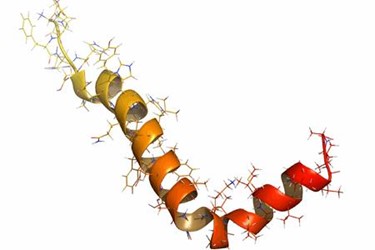Cell Line and Protein Characterization

The characterization of cell lines and proteins is an integral part of the development of biologics and other classes of medicinal products. Charles River is able to assist clients in determining the most appropriate testing program for characterization studies to ensure they obtain the information needed to make critical decisions in their development pathway.
Cell Line Characterization
The characterization of cell banks is essential to ensure the quality of cell-derived biopharmaceutical products. Cell banks must be extensively characterized to assess the cell source with regard to its identity and the presence of other cell lines, adventitious and endogenous agents or molecular contaminants. However, the test design for the characterization of mammalian, microbial and other cell lines is species-specific and can vary depending on the history of the cell line and the type of media components that may be present. Charles River can tailor a testing program to suit your individual needs.
Microbial Characterization Testing Includes:
- Viability
- Purity
- Cell Line Identification
- Bacteriophage Testing (if necessary)
- Analysis of plasmid stability
Mammalian Characterization Includes:
- Cell Line Identification
- Sterility Testing
- Mycoplasma Testing
- In vivo and in vitro virological safety testing including
- Genetic Stability Testing
Protein Characterization
To help you generate the data needed to gain the level of product characterization required for regulatory submission, Charles River offers protein analysis as part of an integrated package of expert analytical services. We have extensive experience in developing and establishing protein characterization methods, particularly pharmacopeial and product specific in vitro potency assays. These characterization services are also a part of our stability and product release support services, where we offer key identity, purity and potency assays.
Analytical Services Include:
- Enzyme kinetic assays
- In vivo and in vitro potency assays
- Amino acid composition analysis
- N-terminal sequencing
- SDS-PAGE
- IEF
- Western blot
- SEC-HPLC for aggregation analysis
- RP-HPLC for protein analysis
- Peptide mapping
- Monosaccharide composition
- N-linked oligosaccharide profiling
- Analysis of host cell proteins and other cell culture contaminants
- Endotoxin by gel-clot and kinetic techniques
- Process residues (Tween®, Triton™-X, Pluronic®)
- Stability studies as per ICH
- Capillary electrophoresis
- IEX-HPLC
- Spectrophotometric assays
- Volumetric and coulometric water determination
- Visible/sub-visible particulates
- Osmolality
- Optical rotation
- Head space analysis
Sialic acid content of glycoproteins and total protein (BCA or Bradford microassays)
